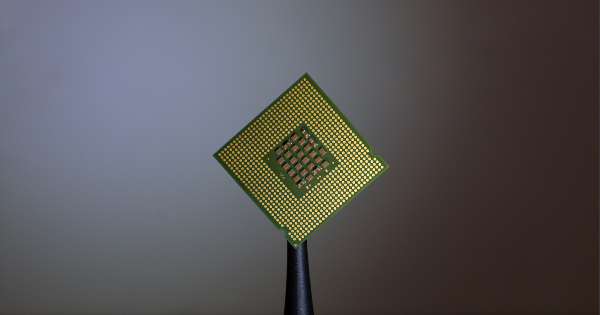Scientists, in a December 6, 2019, report in Nature on the finding of the ability to transmit information in a silicon chip, not simply traditionally with electrons but, with photons.
The “light signals” or photons were “squeezed” or transmitted through the silicon chip in order to “read and write data,” i.e., to process information as photons in place of electrons.
Information defined as a change in state from one to another with the change as a selection reduction to one state over an array of possible other previous choices.
The hypothesis is such that with these developments; there will be an increase in the rapidity of the processing of the information in silicon circuits based on the speed of light, of c.
Conventional computers with the same software but with photons trapped and run through the circuitry would process the information far faster than simply electrons in the same traditional silicon circuits.
The light mechanism used is pushing, so to speak, photons through fibre-optic cables as carriers of information, which is much faster than electrons and, in fact, the fastest speed known in the universe – outside of the literal expansion of space at the same time as the light is travelling, but this simply changes the referential frame of the speed.
Light has a large wavelength. There is commentary in the short article on the utilization of both forms of information transfer – electron and proton – in order to transmit the information in a traditional electronic circuit, which remains an impressive proposition.
As reported, “Harish Bhaskaran at the University of Oxford, UK, and his colleagues designed a tiny dual-signal data-storage device. Both electrical and light signals can be used to read data stored on the device, as well as to write information on it.”
The size of the device is important based on the type of information processing proposed by the physicists, the researcher, here. With the compression of the light pulse, it is separate into “miniscule channels running between gold electrodes and silicon–nitride components. A computer memory cell made of a germanium-based compound sits at the channels’ intersection. Either electrical pulses delivered through the gold electrodes or light pulses focused by the channels can change the device’s ‘state’, allowing for data storage.”
In short, channelization or separate streams of the pulses of light made from the singular input with the separate channelizations changing the state of the circuit and, in turn, changing the state for data storage. It is a differentiation for the creation of information, which is stored.
Source: https://www.nature.com/articles/d41586-019-03740-9.
Academic source: Plasmonic nanogap enhanced phase-change devices with dual electrical-optical functionality
BY NIKOLAOS FARMAKIDIS, NATHAN YOUNGBLOOD, XUAN LI, JAMES TAN, JACOB L. SWETT, ZENGGUANG CHENG, C. DAVID WRIGHT, WOLFRAM H. P. PERNICE, HARISH BHASKARAN
SCIENCE ADVANCES29 NOV 2019 : EAAW2687
Photo by Brian Kostiuk – @BriKost on Unsplash

